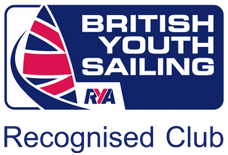A Brief History of Llandegfedd Sailing Club
Sor Brook ran peacefully down the valley past Pettingale Farm and the local children used to come and pick the wild daffodils on the adjacent hillsides. Then in 1960, Cardiff Corporation proposed a scheme to build a new reservoir with the dam wall in the vicinity of Llandegfedd Village to provide water to the growing population of Cardiff.
Geological surveys established that the rock structure at Llandegfedd was not adequate for the enormous design loads for the dam wall, and the reservoir was moved "upstream" to the site that we now recognise! Impounding began in 1964 and sailing started in 1966. Just 5% of the water comes from surface water catchment, the rest is pumped from the River Usk into the reservoir which, when full, holds 5,300 million gallons of water and forms a lake 434 acres in area measuring up to 1.5 miles long and 1 mile wide.
Cardiff Corporation produced a booklet in the 1960's relating the story of building the reservoir. Here it is: Building Llandegfedd Reservoir (pdf)
Club Origins
The Sailing Club was formed in 1968 with 115 founder members. We still have one founder member (Gareth Edwards) regularly attending the Club. Membership flourished and the 1970s were seen as a major growth period for sailing clubs across the UK. In 1974 there was even a waiting list with membership peaking at 300 in 1980, before declining as other family pastimes became more popular.
The Club has always been run by a Commodore assisted by a Vice-Commodore and sometimes a Rear-Commodore. These "flag officers" are supported by various committees in order to run all facets of the club. Officers’ names are listed on the Honours Board page. They have been incredibly busy over the years trying to improve the sailing facilities which we effectively offer to the South-East Wales conurbation of about 1.75 million people, and the club is now building a reputation as a prestige sailing venue.
Club Social Life
The club is unusual in not having its own clubhouse: the original 1960s wooden building deteriorated and was finally condemned in 2006. This left the club without a place to call home and made it far less attractive to new members. Plans evolved to build a replacement clubhouse and all manner of fund-raising activities took place. But just as the club was about to saddle itself with considerable debt, Welsh Water offered to allow the club to share the top-class facilities in its planned new Watersports Centre and said they would also construct a second building, a Visitor Centre and café, close to the access gate.
Without our own bar and galley, the social life of the club has relied heavily upon Après Race at a local public house or cafe. The Club has always held an Annual Dinner Dance or Christmas meal which includes the annual prize-giving ceremonies. This is usually held in a venue central to our membership catchment area.
Racing
Sailing on the reservoir has never been restricted to Sailing Club members and many other visitors use the watersports facilities provided by Welsh Water. As a club though, racing has always been at the heart of our activities. Over the years, the club’s principal fleets have been: Fireball, Laser, Albacore, Heron, 5-0-5, Solo, Mirror, Merlin Rocket, Kestrel, 470, Enterprise, GP14, Scorpion, RS 400, and General Handicap. The largest fleet was in the late 1970's when our Laser Fleet regularly exceeded 20 starters.
Today our two principal fleets are the mixed handicap and asymmetric fleets, with a high proportion of modern fast racing dinghies like the RS 100 and RS Aero along with Lasers, Phantoms, RS 200s and RS400s. We normally race together on Sundays and Wednesday evenings.
The key sailing events in the year are:
- Regatta Weekend in midsummer
- President's Weekend (historically at the end of October, now Mid-September)
- Llandegfedd Pin (historically sailed at 3pm on Regatta Sunday)
- Open meetings for the most popular local classes
- Area championships
Over the years, the Club has been fortunate in producing a number of Champions namely:
- Jack Harper; National Javelin Champion 1968
- Tony Trego; National Kestrel Champion 1976
- Alan Titmus; National Youth Champion, Laser, 1979
- Ian & David Jarrett; National Youth Champions, 420, 1980
- Robin Wood; National Moth Champion 1983
- Robin Wood; World Moth Champion 1983 & 1984
- Robin Wood; National International Canoe Champion 1985 & 1993
- Robin Wood; World International Canoe Champion 1994, 1997
- Phil Hillier; National Kestrel Champion 1990, 1992 & 1995
- Martin Stickland; National Youth Champion, Laser, 1989
- Giles Drewitt; National Youth Champion, 6m Sailboard, 1990
- Catherine Williams; National Womens Champion, Supernova 1998
- Merrick Stanley; Optimist Regatta Champion, 2006
- Nigel Tinkler, RS Vareo Inland Champion, 2007
- Dave Timson; World International Canoe Champion 2010
- Merrick Stanley represents Llandegfedd at the 2013 Laser 4.7 Worlds in Hungary and was third Briton
- Kahla Delahay represents Llandegfedd in the Europe Class 2013 World Championship in Denmark, was first Briton!
- Andy Howard; RS Vareo Master, 2012
- Clare Williams; UK Ladies Championship, Youth Champion in RS Vareo Class 2013 National Championship
- Robin Wood; European International Canoe Champion 2015
- Andy Howard; RS Vareo Grandmaster, UK Travellers Trophy winner, 2015
- David Jarrett; RS Vareo Nationals, held at Llandegfedd SC, 2016
- Can we add any recent achievements here?
Our sailors continue to make headlines at national and international events.
Defining Events in our history
- 1968 Club formed
- Fish disease restricts boat movements
- 1969 Electricity and sewage available on site
- Winter sailing application refused by Cardiff Corporation (CC)
- Open meetings cancelled because of fish disease
- Veranda built on clubhouse
- First application for a lease for the sailing rights on the water
- 1970 Request to C.C. for showers in the changing rooms.
- Slipways improved
- Lease request turned down
- 1971 Problems experienced with low water levels
- C.C. considering an Amenity Centre under the Country Park scheme
- 1972 First rescue boat purchased assisted by Sports Council grant
- New changing huts erected behind clubhouse
- C.C.P.R. training week-ends started
- Amenity Centre plans available
- 1973 Club entered Southport 24 hour race
- 1974 National Water Development Authority (NWDA) took over responsibility for reservoirs in Wales
- 1975 Report prepared by the Club on the facilities and amenities at Llandegfedd for the NWDA
- 1979 Relief pipeline laid along East bank. Entrance widened and new road laid
- 1981 WWA agreed in principle to the granting of a 21 year lease on a plot of land to the club for a clubhouse
- 1983 Lease documents still with WWA solicitors
- 1985 WWA decided to appoint a licensee to run all sailing activities at the reservoir
- Gwent Adventures (GA) awarded the license from April 1985 to Nov 1987
- 1986 Ongoing discussions with WWA regarding clubhouse ownership & use by GA
- Name changed for a while to Llandegfedd Dinghy & Board Sailing Club to encourage sailboarders to join in our activities.
- 1987 Notice to Quit issued by WWA on us as a result of breakdown in negotiations
- WWA imposed a ban on all racing activities on the water
- 1992 WWA resumed responsibility for running sailing activities
- 1992 £5000 raised to promote youth training. 6 new Optimists purchased
- Winter sailing trials run on alternate Sundays under ornithologists' observation
- 1993 Winter sailing started on Southern half of water after successful trials
- Silver Jubilee celebrated with dinner dance attended by sailors from 25 years
- 1994 Club again sent team to Southport 24 hour race after 21 year break !!
- 1995 Toppers bought to improve training facility
- 1996 Asymmetric spinnaker boats make their appearance
- 1998 Teenagers re-appear and sail competitively - but still cannot win Llangorse Challenge!
- 1999 Llandegfedd appears on two Web sites as an experiment.
- 2000 Club registers for its own e-mail and RYA supported web site.
- 2003 Doris comes to the reservoir. She is a 21 foot Wilson Flyer to be used as a permanent committee boat at the middle of the top end of the reservoir.
- 2004 Electronic age has really arrived as all Club Newsletters are delivered by e-mail
- 2006 Clubhouse condemned by its owners, Welsh Water; see early section for news and direction of activity
- Early 2000s Optimists have returned, and we now have a competitive fleet that represents the club, and Wales at UK and National level
- 2007- 2012, Been on the brink of getting new facilities. Membership numbers hold steady, though not with the same members. Need to work on retention but without clubhouse, proving difficult.
- 2013 - Sailing season cut short. WW break ground on new facilities and wont allow users on site during the works. Sailors disperse into other local clubs, primarily Llangorse and Tata or use it as a moment to retire from sailing.
- No Sailing apart from a photoshoot on November 30th
- 2015 - New season. Started a month late due to works running over. New clubhouse. New visitor centre. Site is transformed. Public access granted - including dogs! Start of new chapter for the club.
- 2015 Club hosts RS Vareo Inland championships with 18 boats (only 7 at the Nationals!)
- 2016, Training goes from strength to strength. Club hosts RS 100 Inlands and RS Vareo GBR National Championships with 26 boats, which is the largest Vareo fleet for a few years. Winner is David Jarrett who also competed in the prestigious Champion of Champions "Endeavour Trophy"
- 2017, We yet again have a World Champion in our midst - congratulations again to Robin Wood in his International Canoe
- For future updates, results, lists of our activities, newsletters and many more things see the club website. Better still, come and join us!
The multiple authors apologise for any errors, inaccuracies and omissions.




